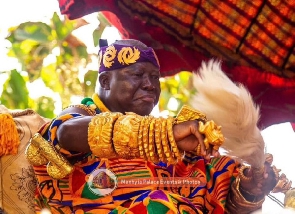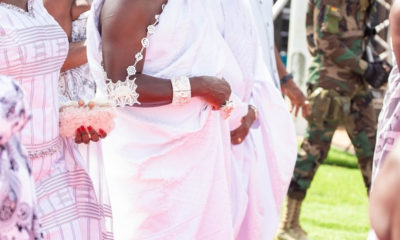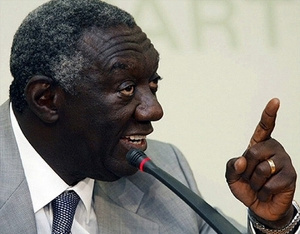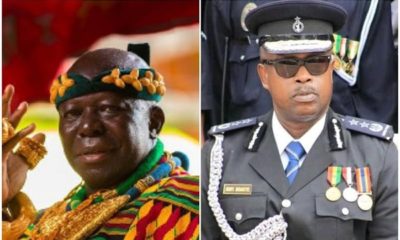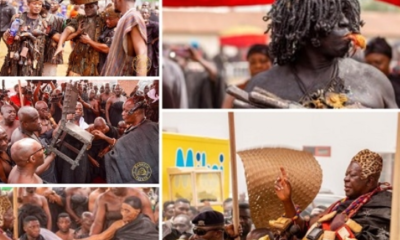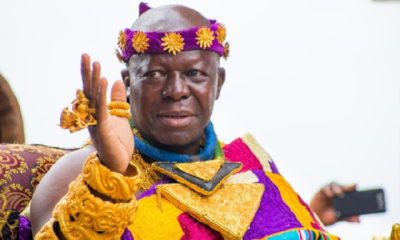GENERAL NEWS
Is the Asantehene a King in Ghana? – The Yes and the Nos
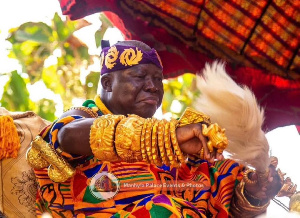
Ghana is known for its unique traditional system. Indeed, it is what was used to govern in the pre-colonial days before the arrival of the Europeans and other Colonial countries.
Following their arrival, there came more formal governmental systems; the three Arms of Government comprising the Executive made up of the President and his cabinet; the Legislature made up of parliament; and the Judiciary which is the court system.
But the traditional system of governance still exists and is very important. In Ghana’s 1992 Constitution, the chieftaincy institution is recognised and accorded its autonomy in Chapter 22.
It among other things guarantees the institution, speaks about the constitution and functions of the National House of Chiefs, Regional House of Chiefs, roles of Chiefs and rules that guide the implementation of customary laws.
Chapter 22, Article 270 (1)
(1) The institution of chieftaincy, together with its traditional councils as established by customary law and usage, is hereby guaranteed.
Chiefs are seen as gatekeepers between the central government and their subjects, contribute extensively towards development and help promote peace and tranquility through customary laws.
The Asantehene is considered the most powerful monarch in the country by many.
His authority and influence on many issues cannot be understated. However, over time, there has been a debate about his title as many describe him as a King whereas all others are described as Paramount Chiefs and other Divisional Chiefs.
There have been a number of reasons associated with these debates. Whilst some maintain that Asantehene is above all others on the traditional hierarchy, some others say there is no legal backing to that argument.
In this piece, we take a look at both sides that have been raised.
The Asantehene is the only King in Ghana:
This has been posited by some persons over the period. In the past, there were Kings in Ghana who ruled over kingdoms. The Nayire for instance ruled over the Mamprusi kingdom and the Asantehene over the Ashanti Kingdom.
With time, the Asantes have maintained this title and reverence and maintain same to this day. The current Asantehene is Otumfuo Nana Osei Tutu II, born Nana Kwaku Dua, ascended as the 16th Asante king in April 1999 and has since been acknowledged as a King by particularly the Asantes. He is in direct succession to the 17th-century founder of the Ashanti Empire, Otumfuo Osei Tutu I.
Among arguments raised as to why the position and hierarchy of Otumfuo cannot be questioned, it has been said that the Otumfuo is in charge of other paramountcies under him and has the power to control same even beyond the Ashanti Region.
He is also said to be the only chief in Ghana who can enstool or destool a Paramount Chief.
The Asantehene is also said to be given authority over all lands in the Ashanti Region and also confers titles to Paramount Chiefs under him.
Per this argument, it is suggested that the Asantehene cannot be a paramount chief if he has such authority over other paramount chiefs.
Otumfuo is legally not recognized as a King by the constitution:
The other school of thought suggests that though Otumfuo may be duly recognized as King by his subjects – The Asantes – he cannot be recognized as a king in the whole of Ghana.
The 1992 Constitution guarantees the Chieftaincy institution and the customary laws but does not define a chief as a king. The law (Article 277) only provides that every chief be installed as a chief but does not mention a king.
The same chapter defines a chief as ‘a person, who, hailing from the appropriate family and lineage, has been validly nominated, elected or selected and enstooled, enskinned or installed as a chief or queen mother in accordance with the relevant customary law and usage’.
Beyond this, Section 58 of the Chieftaincy Act, 2008 (Act 759) makes mention of the Asantehene.
Here, it’s a bit tricky because whereas the Act groups all paramount chiefs as one, it clearly mentions the Asantehene.
It states;
The following are the categories of chiefs;
a – The Asantehene and Paramount Chiefs,
b – Divisional Chiefs
c – Sub-divisional Chiefs,
d – Adikrofo, and
e – other chiefs recognized by the National House
Regardless, it doesn’t still define the Asantehene as a King considering the prefix says;
“the categories of Chiefs”.
CLICK HERE TO DOWNLOAD PRESS RADIO MOBILE APP
It is no doubt however that, the Asantehene is considered powerful and very influential in both social and critical national issues. He is usually seen at major state ceremonies and has interacted and met with basically every Head of State during his reign.
Source: www.ghanaweb.com
-

 Lifestyle1 month ago
Lifestyle1 month agoRoad Safety Authority narrates how buttocks causes road accident
-

 GENERAL NEWS2 months ago
GENERAL NEWS2 months agoWhy 15 police officers stormed Owusu Bempah’s church – Kumchacha narrates
-

 GENERAL NEWS1 month ago
GENERAL NEWS1 month agoWatch how Ibrahim Mahama rode Honda superbike to pay last respects to late friend
-

 GENERAL NEWS1 month ago
GENERAL NEWS1 month agoHow Offinso residents storm destooled queen mother’s house, demand for new chief
-

 South Africa News1 month ago
South Africa News1 month agoWoman thrown out of a speeding taxi while on her way to work
-

 GENERAL NEWS3 weeks ago
GENERAL NEWS3 weeks agoDeadly clash between youth and navy personnel results in two deaths at Tema Manhean
-

 SHOWBIZ KONKONSAH3 weeks ago
SHOWBIZ KONKONSAH3 weeks agoJunior Pope’s Death: Video of John Dumelo refusing to join canoe for movie shoot over safety concerns resurfaces
-

 News Africa2 months ago
News Africa2 months ago‘Satanically dubious’ – SCOAN releases statement on BBC’s report about TB Joshua, church

